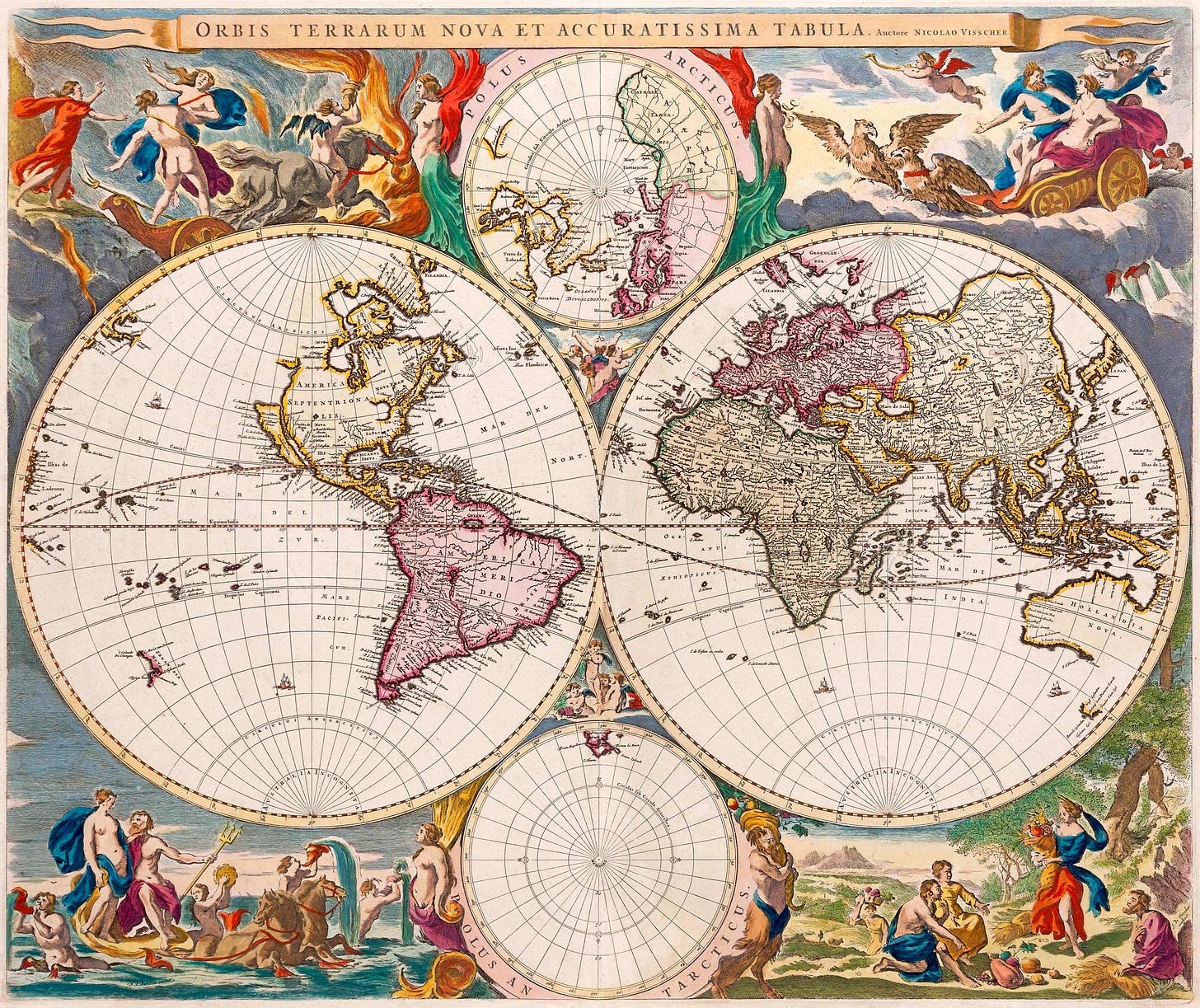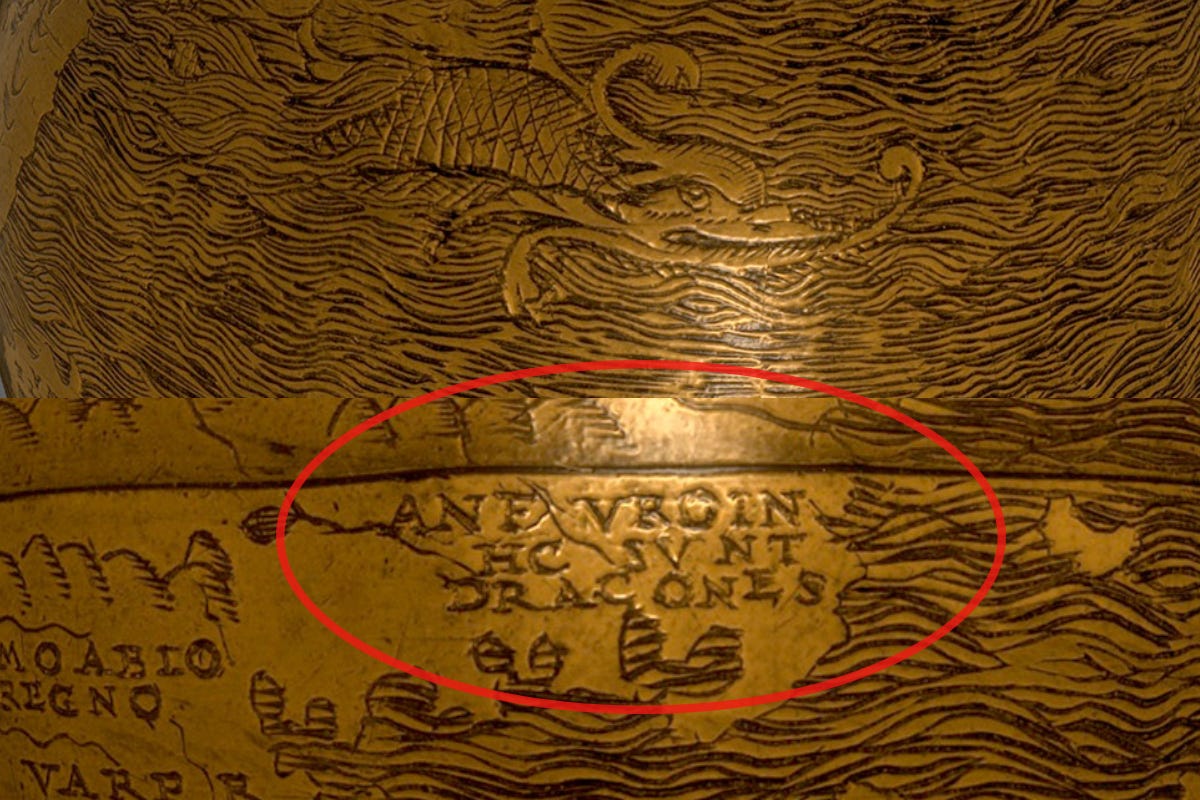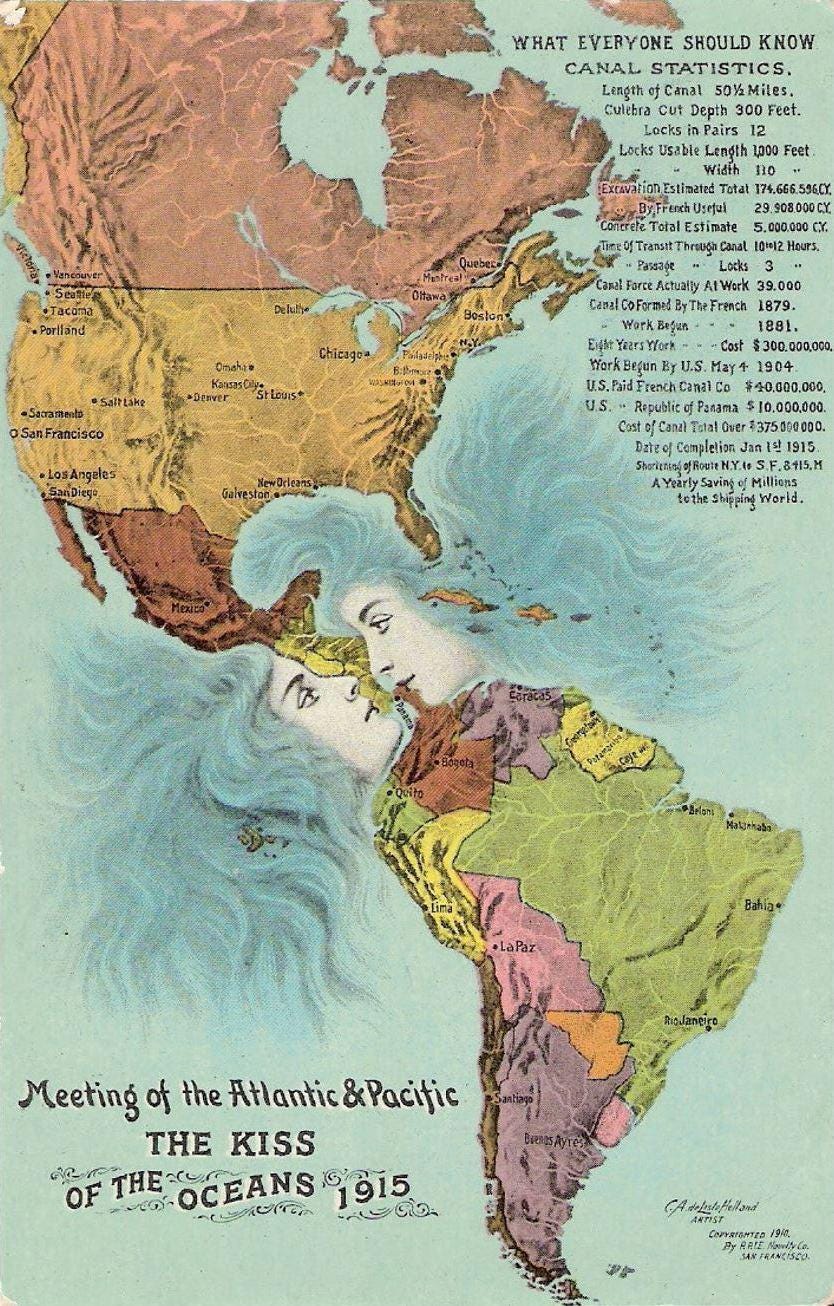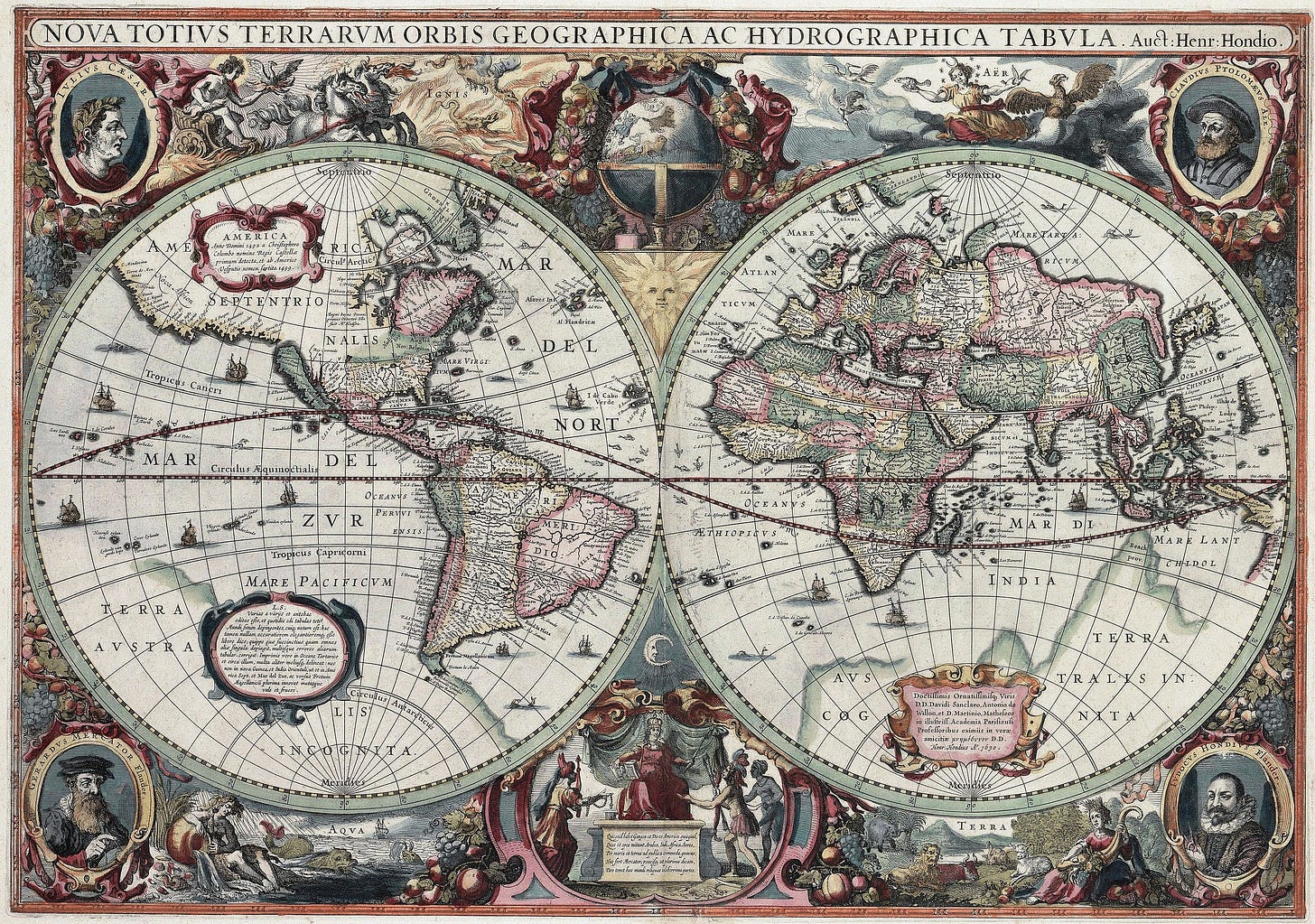The Beauty of Old Maps
10 masterpieces that reveal how our ancestors saw the world...
In the words of Gilbert H. Grosvenor, National Geographic magazine’s founding editor:
A map is the greatest of all epic poems. Its lines and colors show the realization of great dreams.
And what could be more epic than leaving Greece aboard a small vessel over 2,000 years ago, setting sail into the unknown in pursuit of a dream that stretched to the very edges of the world?
Did you know the Ancient Greeks ventured into the Arctic more than two millennia ago?
Around 325 BC, the geographer, explorer, and astronomer Pytheas of Massalia circumnavigated the British Isles and became the first Greek known to venture so far north, witnessing phenomena such as polar ice, the midnight sun, and, some say, even the northern lights. His observations of the tides also mark the earliest suggestion that the moon governs their rhythm.
Yet, if this alone seems unimaginable, consider this: Pytheas’s journey — largely known to us only through the writings of others — also brought him into contact with Celtic and Germanic tribes. From them, he heard tales of Thule, a mysterious land said to lie even farther north…
Calling this adventure “epic” feels like an understatement…
Reminder: this is a teaser for my subscriber-only articles.
Beauty is truth is an independent publication that exists entirely because of readers like you. There are no ads here, just a passion for sharing beauty.
Upgrade your subscription for just a few dollars a month to support my mission and access members-only content 👇🏻
Imagine the thrill — and the fear — of sailing into waters no one had charted, stepping onto lands no-one had yet named...
Ancient maps were often born from heroic exploration, yet their true magic extends far beyond the feats themselves. They also carry us back to a time before satellites, before GPS, when the world was vast and mysterious.
Early cartographers were both scientists and artists, piecing together knowledge from explorers’ journeys and fragments of older maps. Where certainty ended, imagination began. As Kelly Link beautifully puts it:
On old maps, cartographers would draw strange beasts around the margins and write phrases such as ‘Here be dragons.’ That’s where monsters exist: in the unmapped spaces, in the places where we haven’t filled in all the gaps.
The maps you’re about to see are priceless historical treasures, and, in many cases, stunning works of art in their own right. Here are 10 of history’s most extraordinary examples that reveal the world as our ancestors saw it, dreamed it, and brought it to life…
1. The Kiss of the Oceans, 1923
We’ll begin with an example that’s relatively recent compared to the much older ones we’ll discuss later — but it’s simply too exquisite not to mention. It’s a stunning postcard titled The Kiss of Oceans, created in 1910 for the 1915 Panama-Pacific Exposition.
Beyond celebrating the completion of the Panama Canal, it commemorated San Francisco’s remarkable resilience after the 1906 earthquake and fire.
It really is breathtakingly beautiful — a true masterpiece of early 20th-century graphic art…
2. Hendrik Hondius Map, 1630
Nova Totius Terrarum Orbis Geographica ac Hydrographica Tabula, created by Hendrik Hondius in 1630 and published the following year in Amsterdam, is a gem of early modern cartography.
It features the four elements — fire, air, water, and land — and portraits of Julius Caesar, the atlas’s first publishers, and Claudius Ptolemy (c. 87–168 BC), often credited as the father of cartography. It was also the first dated map in an atlas and the earliest widely available map to show any part of Australia.
3. Map of the New World, 1540
This remarkable map by Sebastian Münster is among the earliest printed maps to show the New World as a distinct continent.
The idea of a “New World” emerged in the early 16th century during Europe’s Age of Discovery. It was popularized by the Italian navigator Amerigo Vespucci, who, in his pamphlet Mundus Novus, argued that the lands beyond the Atlantic were not part of Asia but entirely new continents…
4. The Piri Reis Map, 1513
Keep reading with a 7-day free trial
Subscribe to Beauty is truth to keep reading this post and get 7 days of free access to the full post archives.






